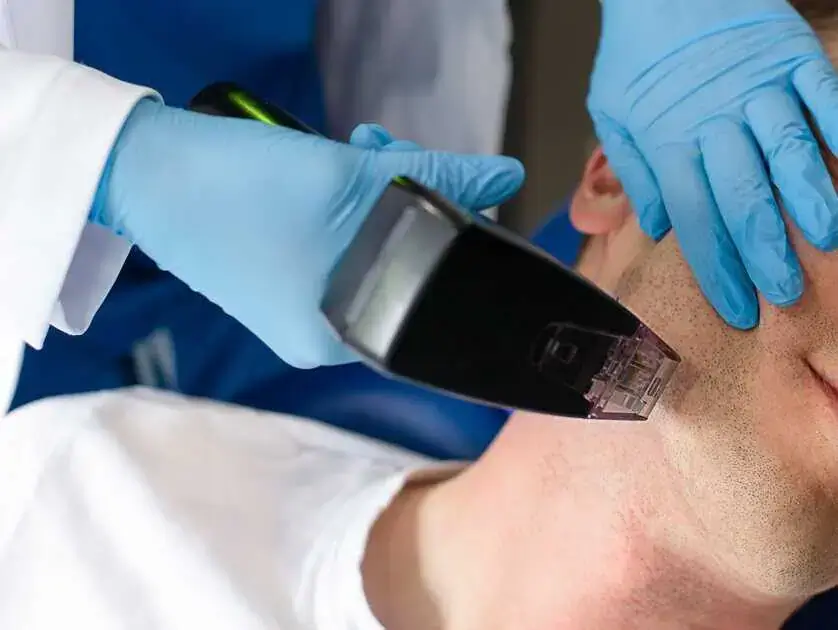Table of Contents
Intense Pulsed Light, commonly known as IPL, has garnered attention for its role in skin and hair care. While many quickly seek out this treatment, questions remain about its efficacy. Is IPL a one-stop solution for achieving flawless skin and eliminating unwanted hair? The answer is more complex than one might think. Various factors, including the type of skin condition, the expertise of the healthcare provider, and individual skin types, can influence the outcome. It raises the question: Is IPL the definitive answer for skin and hair concerns, or is it another option among many?
What is IPL?
Intense Pulsed Light, or IPL, is a laser treatment that uses gentle bursts of broad-spectrum light to treat various skin conditions and pigmentation irregularities. Unlike traditional lasers, which use a single wavelength of light, IPL employs multiple wavelengths. This broad spectrum allows it to target different layers of the skin, making it versatile in treating a range of issues. The treatment works by directing light pulses at the skin’s surface. The skin absorbs These pulses, where they target and break down specific cells or pigments, such as melanin in freckles or hair follicles for hair removal.
The technology behind IPL is designed to be non-invasive, meaning it targets only the surface layer of the skin while leaving the surrounding tissues unharmed. It makes it a relatively safe option for those looking to address specific skin concerns without undergoing more invasive procedures. The treatment is administered through a handheld device that releases light pulses, and it’s often done in a series of sessions for optimal results.
Conditions Treated by IPL
From common concerns like acne and sun damage to more specialized issues like spider veins and precancerous lesions, IPL offers a versatile treatment option. However, each condition may require a different approach or number of treatment sessions, and you may need to consult a healthcare provider for a personalized treatment plan. That said, the following conditions can be treated with IPL:
- Rosacea: Reduces redness and inflammation associated with this skin condition.
- Acne: Targets and reduces acne-causing bacteria and inflammation.
- Broken Capillaries: This helps to fade the appearance of broken blood vessels on the skin’s surface.
- Sun-Damaged Skin: Addresses discoloration and uneven skin tone caused by sun exposure.
- Precancerous Lesions: Can be used as a preventative measure to treat certain types of skin lesions that might become cancerous.
- Cellulite: Aids in reducing the appearance of cellulite by improving skin texture.
- Birthmarks: Lightens or removes various kinds of birthmarks.
- Spider Veins: Treats and minimizes the appearance of small, dilated blood vessels on the skin.
- Hair Removal: Targets hair follicles to reduce or eliminate unwanted hair.
- Excessively Oily Skin: Helps to control sebum production, thereby reducing oily skin.
- Psoriasis: Alleviates symptoms and reduces the appearance of psoriasis patches.
How IPL Works?
Intense Pulsed Light (IPL) operates on selective photothermolysis, a precise microsurgery technique to target specific tissues without affecting the surrounding areas. Unlike traditional lasers that use a single wavelength of light, IPL employs a broad spectrum, allowing it to penetrate multiple layers of skin. It is achieved through a handheld device that emits light pulses, which are absorbed by specific chromophores (molecules that can absorb light) in the skin.
When the light pulses are absorbed, they convert into thermal energy. This heat is what targets and breaks down specific cells or pigments. For example, in the case of hair removal, the heat energy targets the melanin in the hair follicles, effectively destroying them and inhibiting future hair growth. Similarly, for skin conditions like rosacea or sun damage, the thermal energy targets the abnormal blood vessels or pigments, breaking them down to be naturally eliminated by the body’s immune system.
The treatment is calibrated to ensure only the targeted cells absorb the light, leaving the surrounding tissues unharmed. It is possible due to the adjustable settings of the IPL device, which can be tailored to suit different skin types and conditions. The device also often includes cooling mechanisms to minimize discomfort and protect the skin from any potential heat damage.
The scientific intricacy of IPL lies in its ability to use varying wavelengths for different conditions, making it a versatile and practical treatment option. However, the success of the treatment also depends on the healthcare provider’s expertise, who must correctly set the device’s parameters for each case.
Procedure and Post-Care
By adhering to these pre and post-care guidelines, patients can optimize the results of their IPL treatment.
Initial Consultation
- A consultation is usually the first step, where the skin condition is assessed, and appropriate treatment settings are determined.
Pre-Treatment Preparations
- Patients may need to avoid sun exposure and certain skincare products leading up to the treatment.
During the Procedure
- A cooling gel is often applied to minimize discomfort.
- The healthcare provider uses a handheld IPL device to administer light pulses to the targeted areas.
- Session duration varies, typically lasting between 20 minutes to an hour.
Immediate Aftercare
- Patients may experience mild redness and swelling, similar to a sunburn, which usually subsides within a few hours to a few days.
Post-Care Instructions
- Avoiding direct sun exposure and diligent use of sunscreen are often recommended.
- Hot showers and strenuous exercise may be discouraged for at least a day to prevent irritation.
Follow-Up Sessions
- Multiple sessions may be required for conditions like hair removal or acne.
- The number and frequency of these sessions are usually discussed during the initial consultation.
Results
Generally, patients expect gradual improvements starting around 14 days post-treatment. Depending on the treated condition, this is often the time it takes for the skin to start showing signs of reduced pigmentation, diminished redness, or lessened hair growth.
The peak results are usually observed three to six months after multiple treatment sessions. This timeline allows the skin to undergo natural healing and rejuvenation processes. For instance, in the case of hair removal, multiple sessions are needed to target hair follicles at different growth stages, and the cumulative effect becomes most noticeable in this time frame.
Takeaway
Ready to take the next step in your skincare or hair removal journey? Schedule a consultation with Gentle Giant Care today. Our team of experts is highly trained in administering IPL treatments, and we’re committed to helping you achieve your desired results. In Atlanta, GA, and Lauderdale, FL, Gentle Giant Care offers state-of-the-art IPL treatments tailored to your specific needs. Don’t wait to transform your skin—contact us now to book your appointment.





